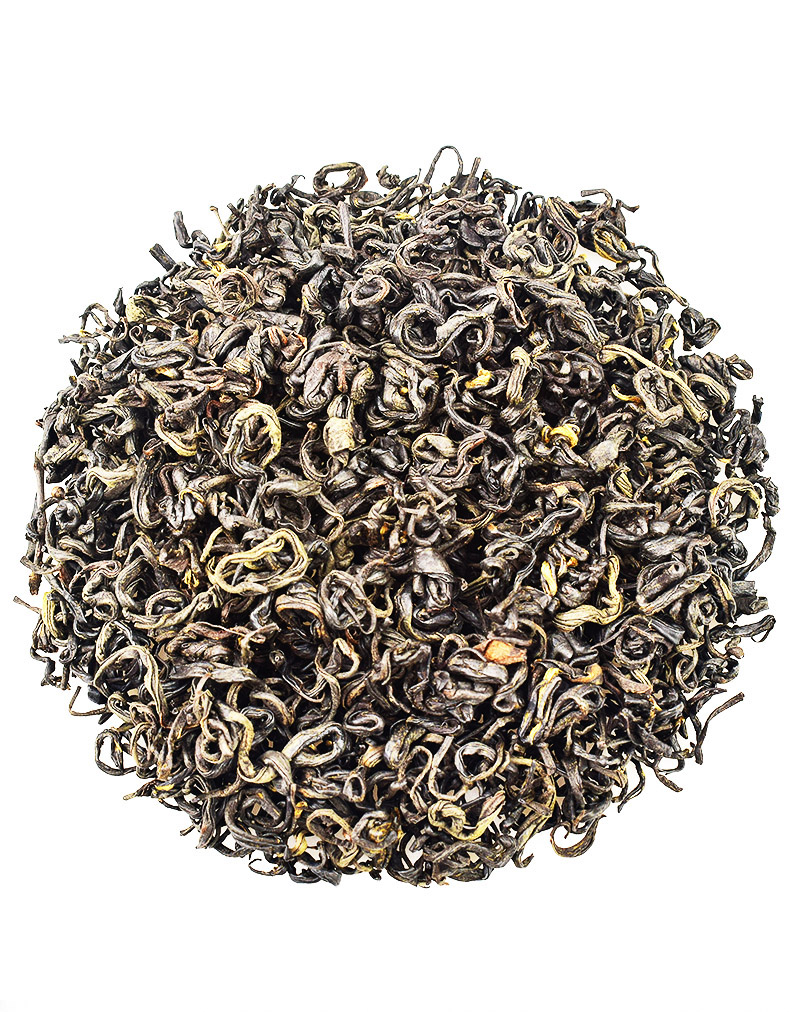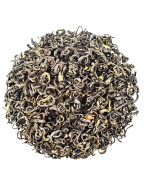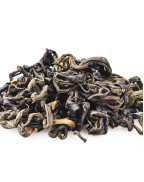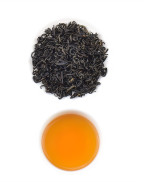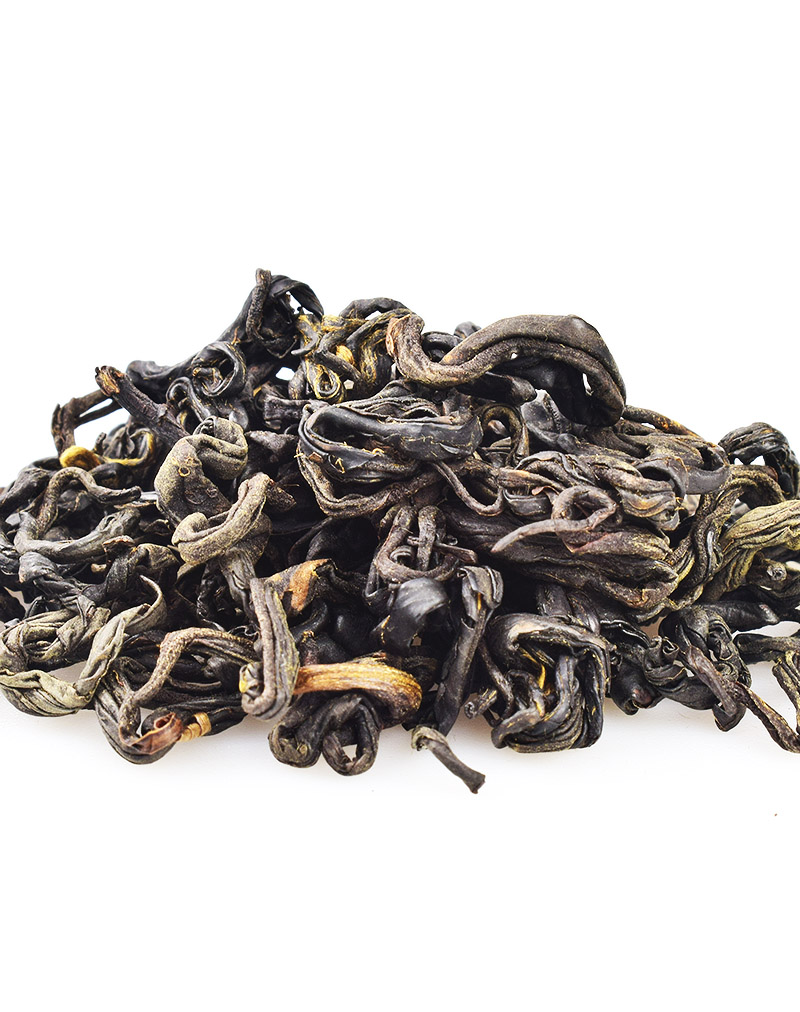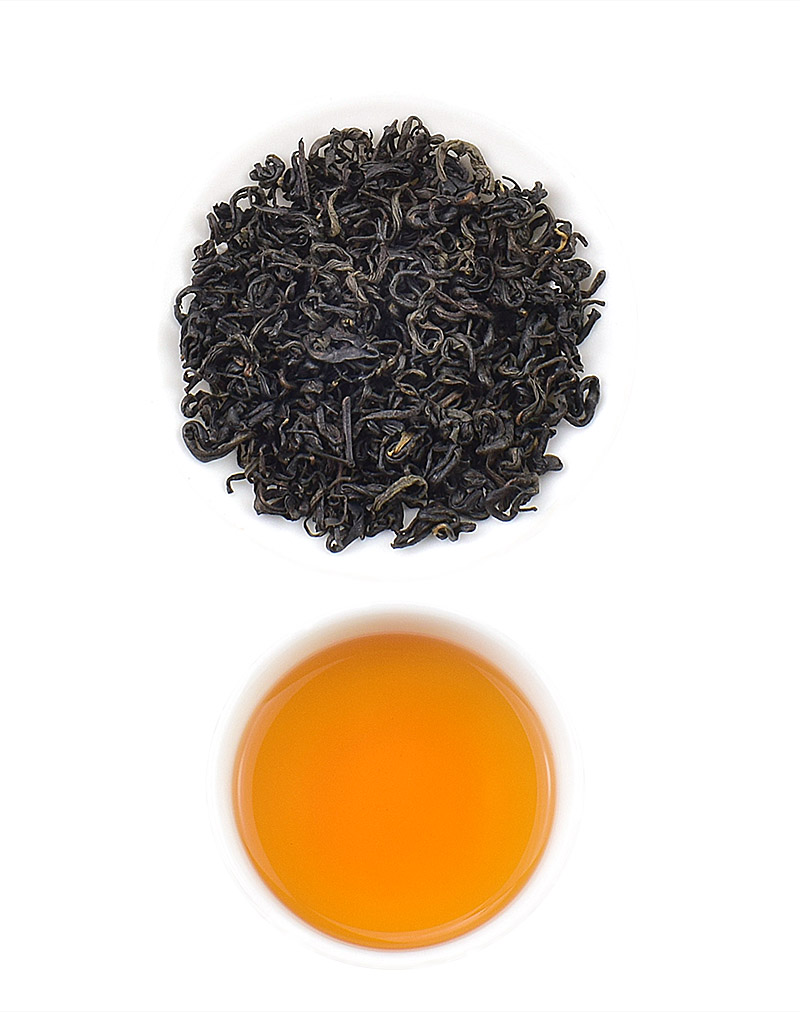Premium Keemun Aromatic Snail Black Tea
- Product Code: simple
- Availability: In Stock
Basic Info
Name: Premium Keemun Aromatic Snail Black Tea
Other names: Hong Xiang Luo Keemun Tea, Qimen Xiang Luo
Origin: Qimen County, Anhui Province
Taste & Aroma: Mineral flavour, tangy fruity, lightly sweet, smooth, fruity with a hint of floral note
Liquor: Bright and clear liquor,crimson
Dry Leaf: Coiled leaves, snail shapes
Harvest Date: 5th April, 2024
Fermentation: Complete
Item Form: Loose leaves
Altitude: 1500m above sea
Ingredients: Hand-picked natural tea buds and leaves
Tea maker: Wang Xiaoli
Tea bush: Zhu Ye Zhong (槠叶种)
Shelf Life: 18-24 months
Storage: Stored in cool, airtight, opaque containers
Shelf Life: 18months at room temperature / 24 months with low temperature storage
Flavor: Unflavored
Caffeine: Middle
Premium Keemun Aromatic Snail Black Tea
Keemun tea
Keemun tea (Qi Men Hong Cha in Chinese) short for Qihong, is a famous tea in Chinese history. The name of the tea is an older (colonial era) Western spelling of the name of it’s origin Qimen County , Qimen (pronounced "Chee-men"). It was created by tea farmers in Anhui Province during the reign of Guangxu (1871 - 1908) .Keemun black tea is one of the best and most popular Chinese black teas. Keemun tea is produced exclusively in the Qimen County in the south of Anhui province, a famous tea producing area in China. Other producing areas of Keemun tea include Dongzhi, Guichi (today's Chizhou City), Shitai, Yi County in Anhui Province, and Fuliang in Jiangxi Province. Compared to other black teas, Keemun black tea actually has a short history. It was created in 1875, which has a history of more than 100 years.

The Scenery Of Qimen County
Show Full Description
The areas producing Keemun black tea are all mountainous and covered with forests and characterized by low temperatures, high humidity, frequent fog and fertile soil.
These natural conditions are very suitable for the growth of tea trees. In addition, the main variety of local tea trees, Castanopsis carlesii, has rich contents and high enzyme activity, which is very suitable for the manufacture of Gongfu black tea. The lack of sunlight increases the chlorophyll content in the fresh leaves, leading to a fruity, naturally sweet and fruity palate and a distinct floral (orchid-like) fragrance. When brewed, the tea takes on a clear, brilliant red color.
Keemun (Qimen) County is located in the southern part of Anhui Province, between latitude 29°35 '-30 °08' N and longitude 117°12 '-117 °57' E. It is 74.8 kilometers long from north to south, 59.9 kilometers wide from east to west, and covers a total area of 2,257 square kilometers. Influenced by the North subtropical humid monsoon climate, the mild climate, abundant rainfall and cloudy weather make Keemun very conducive to the growth of high quality Keemun black tea.
The production of Qimen black tea can be roughly divided into three stages.
1.Picking/plucking. Tea leaves and flushes, which includes a terminal bud and two young leaves, are picked from Camellia sinensis typically about 6 times a year during early spring and early summer or late spring.
2.Primary processing:It includes Withering, Rolling, Oxidation, Drying.
3.Sorting. Tea sorting process or refining process is complicated and takes a lot of time. It includes more than ten steps. Sorting can help remove physical impurities, such as stems and seeds.
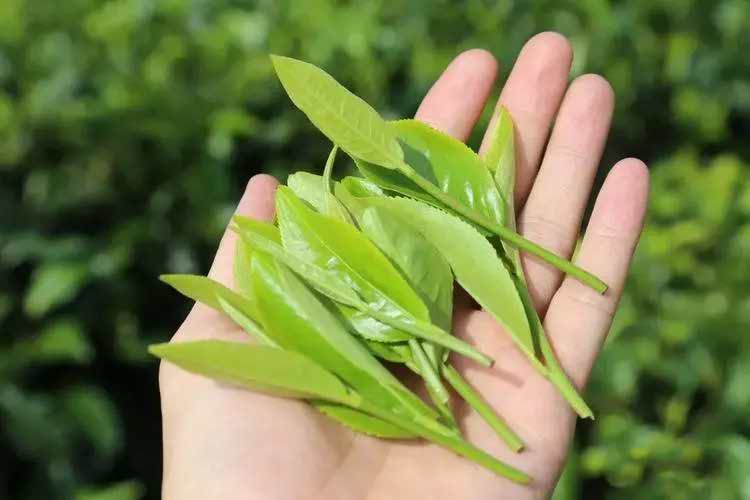
Fresh Leaves Of Zhu Ye Zhong Cultivar
the Ace of the three rich-aroma black tea of the world
Known as the "Queen of Black Tea", Keemun Black tea won the Gold medal at the Panama World's Fair in 1915 for its high quality and special aroma, called "Keemun fragrance".
Depending on the type, quality and the way how you brew it, Keemun black teas may have different flavor and liquor color. Overall, Keemun black tea is lightly sweet, smooth, fruity with a hint of floral note with minor variations in liquor color, sweetness, and aroma. Color of tea liquor may range from intense orange to amber and red.
The "Keemun fragrance" refers to the unique fragrance of Keemun black tea, which is related to the chemical components of geraniol, benzyl alcohol and 2-phenylethanol contained in the tea leaves, which have floral, fruity, orchid-like, and honey-like fragrance. The aroma of Qimen has a lot to do with the unique environment of Qimen, Anhui Province.
Unlike Indian Assam tea, Keemun is made from Camellia sinesis var. sinensis, mostly used in China and popular for producing green tea. That’s why Keemun black tea is mellower than the black teas of Assam and Ceylon, and has a lower caffeine content. Keemun is often added to English breakfast or Russian Caravan blends, to achieve the specific profile and to soften the flavor of Assam tea. Finer breakfast blends often feature Keemun as a main ingredient due to its depth, pleasing rose like aroma, and excellent acceptance of both milk and sugar. It is also a key ingredient in the breakfast blend English Breakfast or Russian Caravan blends
In addition to the traditional Keemun Black Tea made by the traditional process, there are several Keemun Black Tea made by the new process on the market. Keemun Golden Needles Black Tea (Qi Hong Jin Zhen) belongs to the new-process Qimen black tea, the others are Keemun (Qi Men) Hong Mao Feng Black Tea , Keemun Xiang Luo Black Tea (Qi Hong Xiang Luo) and so on. In fact, Keemun Golden Needles Black Tea (Qi Hong Jin Zhen) is not very different from Keemun Xiang Luo Black Tea (Qi Hong Xiang Luo) in the production process. The main difference is in the shaping step. The former is curled into a snail shape, while Keemun Golden Needles Black Tea (Qi Hong Jin Zhen) is somewhat similar to Huang Shan Mao Feng, and the the processed leaf is tight and straight. Of course, the two are also different in other aspects such as evenness and rolling degree.
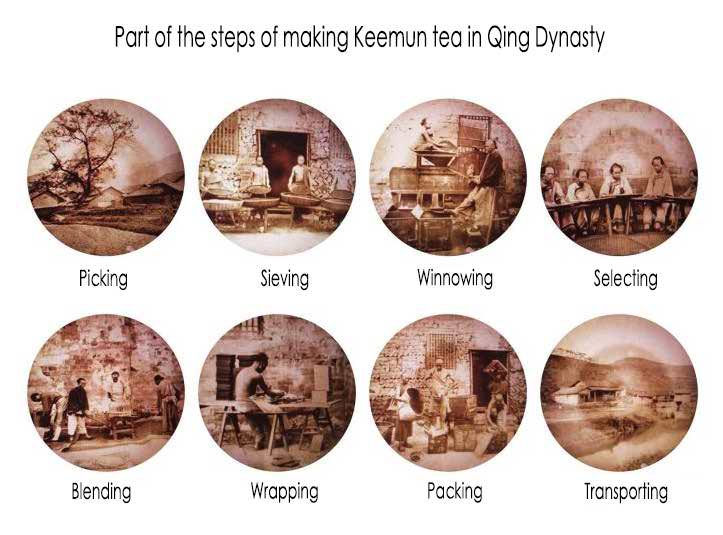
Keemun Aromatic Black Snail Tea
Invented in 1996-1997, Keemun Aromatic Snail Black Tea is a top grade type of Keemun black. It's name refers to the appearance of the dry leaf that resembles the shape of small snail shell. The traditional Keemun black tea Keemun Gongfu (kung fu) black tea has a cutting process in production, the tea was cut into 0.6-0.8cm small particles. It is said that the tea maker who invented this tea got inspiration from the shape of the famous green tea Bi Luo Chun Green tea. Why not try to make the shape of Qimen black tea similar to Biluochun? After many attempts, finally a new Qimen black tea was born. Aromatic Snail tea is made of whole early spring young leaves and tender buds and has a distinctive coiled leaf appearance shaped into snail shapes, also featuring a distinctive and charming Keemun fragrance (祁門香).
This tea and our other Keemun Golden Needles Black Tea both come from Qimen County, and although they are both newer types of Qimen black tea, they are processed differently, so the appearance is more different and the taste is slightly different.
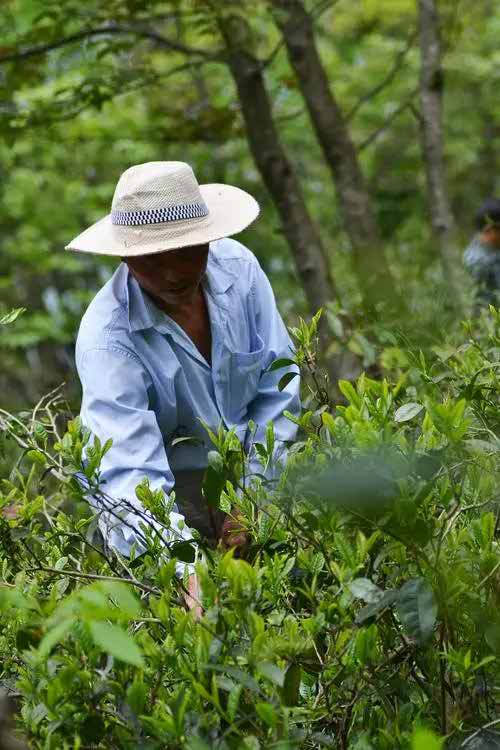
Picking Kemmun Black Tea In High Mountain
The flavor of Keemun Aromatic Black Snail Tea is relatively thicker due to its second fermentation step. The coiled leaves produce a bright liquor reddish-brown cup with a full-bodied, light, woody and tangy flavour and lightly creamy, sweet honey taste with a lingering, mellow long-lasting aftertaste. If you prefer a richer taste profile than Gongfu Keemun tea and want to appreciate the beautiful visual appearance of this new-born Keemun tea with a sweeter and mellower note, consider drinking this tea.
It is a mellow tea that will stand alone and go very well with sugar and/or milk. For iced tea, follow the ratio of 1g tea :50ml water, let it sit in the fridge for at least 1 hour before serving.
This Keemun Aromatic Snail Tea comes from Keemun County, in Huangshang City, Anhui Province. The maker is Wang Xiaoli whose family has been making Keemun black tea since his grandfather's generation. I met them through a a local tea retailer I became a fan of his tea after having tried his Keemun samples sent to me.
| Chinese Gongfu Method | |
| Tea | 5g |
| Water | Gaiwan 3oz / 85ml |
| Time | 6 infusions (rinse,15s,25s,45s,70s,90s,115s) |
| Temperature | 90ºC |
| Teapot Method | |
| Tea | 7g |
| Water | Teapot (8oz / 240ml) |
| Time | 1- 4mins |
| Temperature | 90ºC |


